奩院,北京,中国
2019-08-07周兆前,刘奕秋
建筑设计:周兆前,刘奕秋
Architects: ZHOU Zhaoqian, LIU Yiqiu
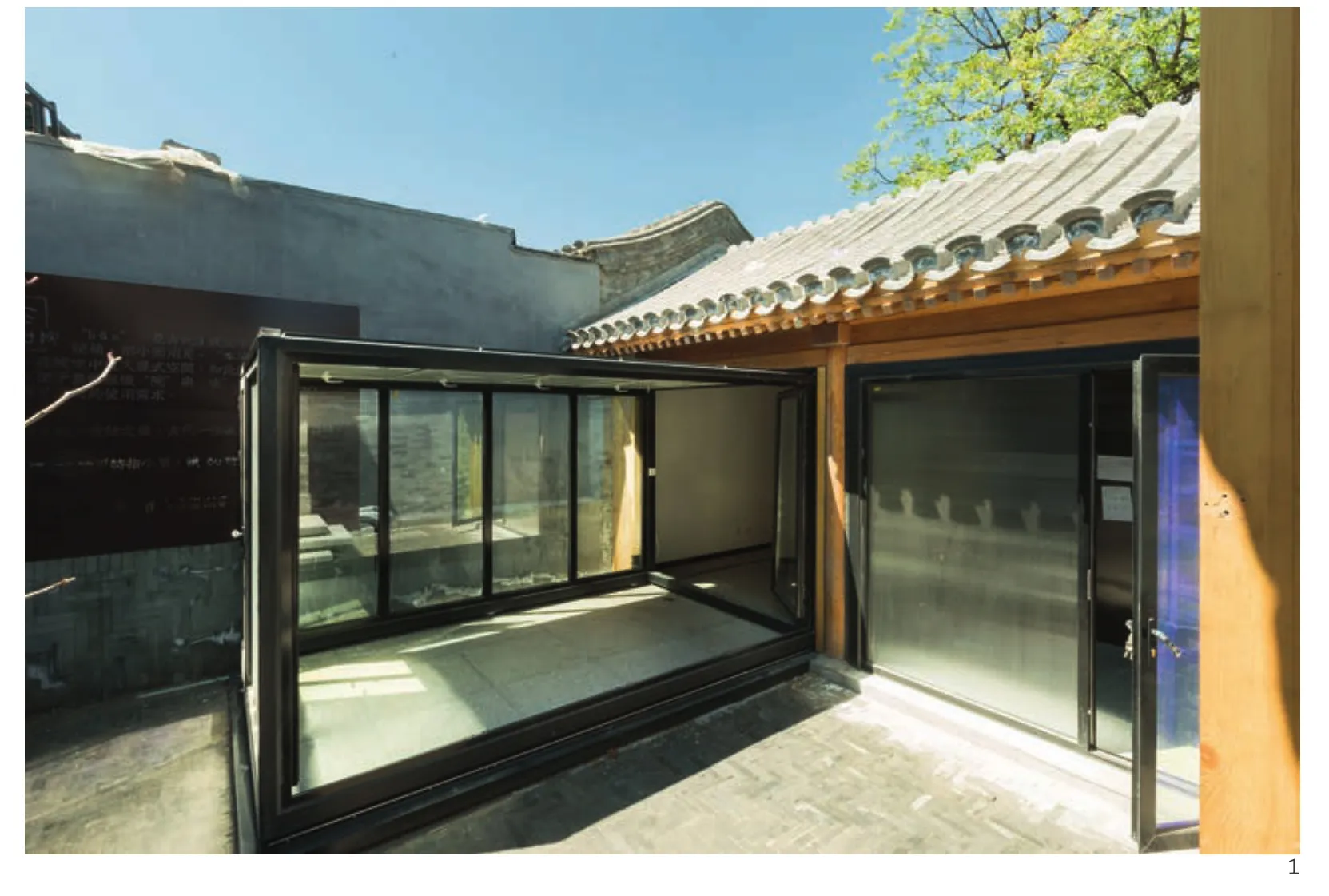
1 改造后外景/Exterior views after renovation

2 改造后外景/Exterior views after renovation
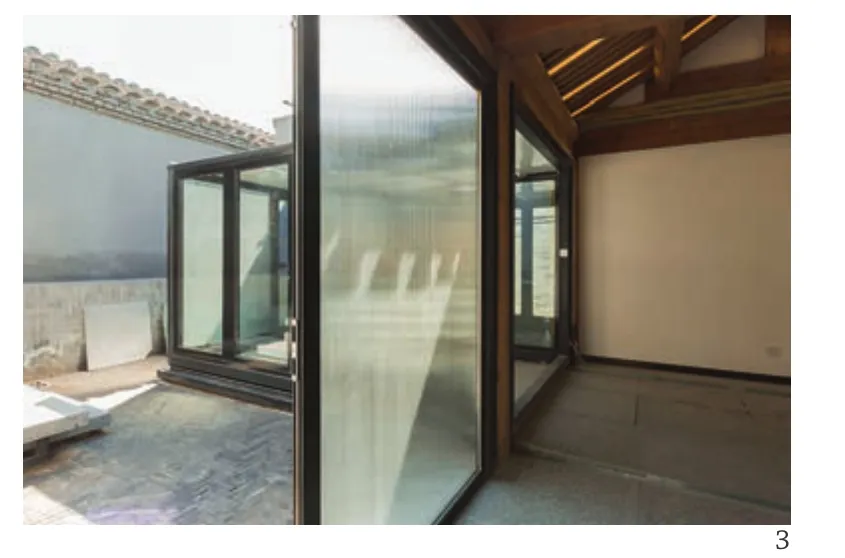
3 改造后内景/Interior views after renovation
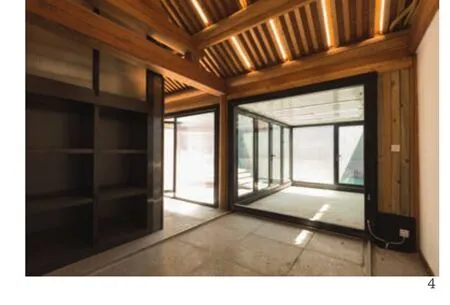
4 改造后内景/Interior views after renovation
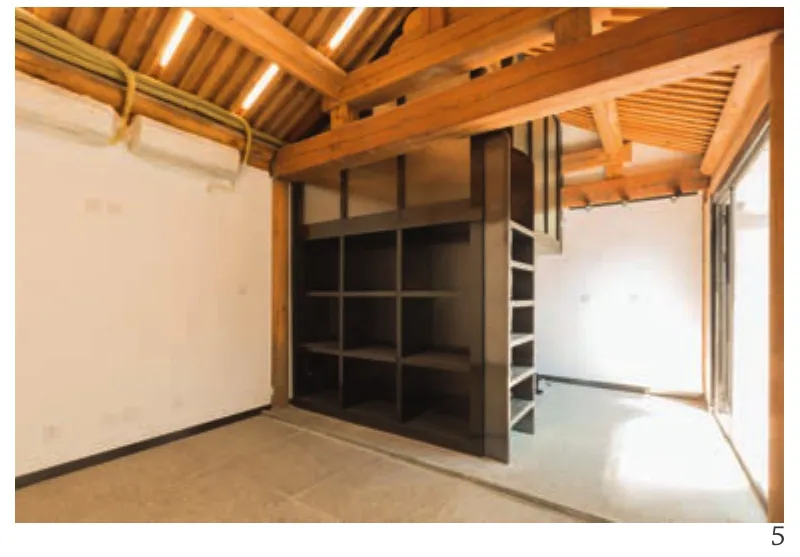
5 改造后内景/Interior views after renovation
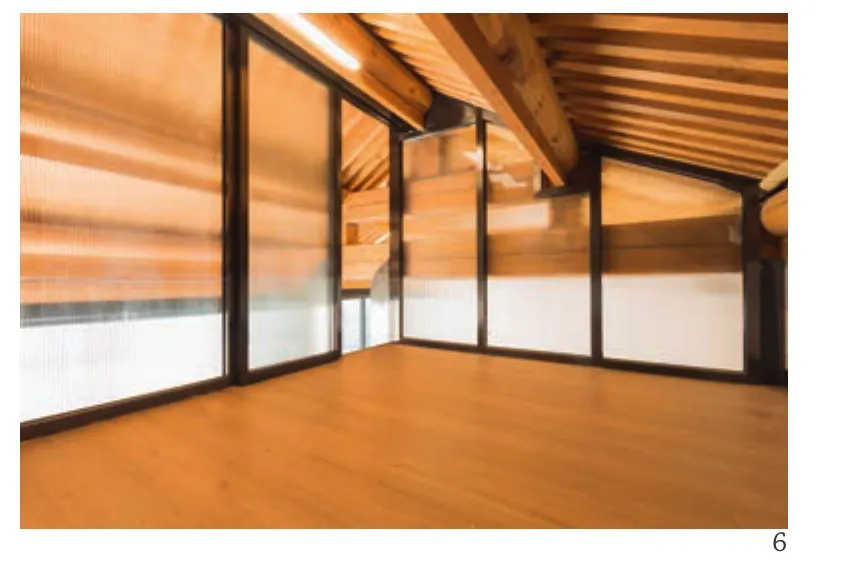
6 改造后内景/Interior views after renovation
奩院位于北京市白塔寺片区青塔胡同39号,布局简单方正,一宅一院。改造前两处违章搭建侵占了原有的大部分院落,整体环境逼仄局促。这展现了胡同中的一种建设常态——居民们需要更多的生活空间,进而自发地在院落中加建房屋以满足需求。然而现状院落中的违章搭建虽满足了自下而上的生活需求,却与自上而下的风貌管控之间产生了矛盾。白塔寺片区的保护规划要求后续改造不能改变原有建筑的产权面积与整体形态,容积率、屋脊与檐口高度等都须保持不变。
院落之小、控规之严起初为设计带来了诸多限制,但也在后续过程中成为了促进设计发展的主要动因。“奩”,是古代汉族女子存放梳妆用品的镜箱,形小而用足。本方案以此为概念,在保留形态格局,容积率不变的前提下,在宅院中置入可推拉的灰色“屉式空间”,以整体组织宅与院原本对立的黑白空间关系,自由增减使用面积,在局促用地中也可满足不同的使用需求。改造后的奩院共有两个开间,西侧开间与推拉模块相结合,形成了一个可调整大小的整体工作空间。东侧开间则容纳了集卫浴、卧室、橱柜功能为一体的生活模块,保证了舒适私密的现代生活品质。
北京老城区中有着许多这样的小院儿,它们并没有典型的四合院那般规整,却是百姓生活的空间载体,是形成老城肌理必不可缺的基础细胞。奩院的探索希望为未来老城的基本面更新提供一种创新的可能性。推拉模块与生活模块在老城院落中可被简单有机地置入,居民可根据自身需求,自下而上地参与保护与改造,并通过院落单体更新以点带面地带动胡同的复兴。为了便于推广,项目并没有使用昂贵的材料与高难度的构造做法,未来也可考虑通过预制装配的形式,更高效方便地规模化模块的生产。奩院是基于合院建筑空间保护与功能使用弹性的一次研究探索,期望它可为面临同样问题的中国其他老城区域改造提供一个可复制、可持续、且较为普适的解决方案。
项目信息/Credits and Data
地点/Loction: 青塔胡同39号/No.39 Qingta Hutong
业主/Client: 北京华融金盈投资发展有限公司/Beijing Huarong Jinying Investment Development Co., Ltd.
施工图合作单位/Construction Drawing Collaborator: 中科院建筑设计研究院有限公司/Institute of Architecture Design and Research, Chinese Academy of Sciences (ADCAS)基地面积/Site Area: 68.67m2
建筑面积/Floor Area: 33m2(原有产权面积/Original property area),改造后最大使用面积/Maximum usable area after renovation: 51.3m2(33m2原有产权面积+10.3m2推拉模块展开面积 + 8m2生活模块二层面积/Original property area of 33m2+ extensive area of push-pull module of 10.3m2+ area of two-layers of living module of 8m2)
摄影/Photos: 改造前/Photos Before Renovation: 北京华融金盈投资发展有限公司/Beijing Huarong Jinying Investment Development Co., Ltd. 改造后/Photos After Renovation: 周兆前/ZHOU Zhaoqian

7 示意图/Diagrams

8 示意图/Diagrams

9 改造前平面/Floor plan before renovation
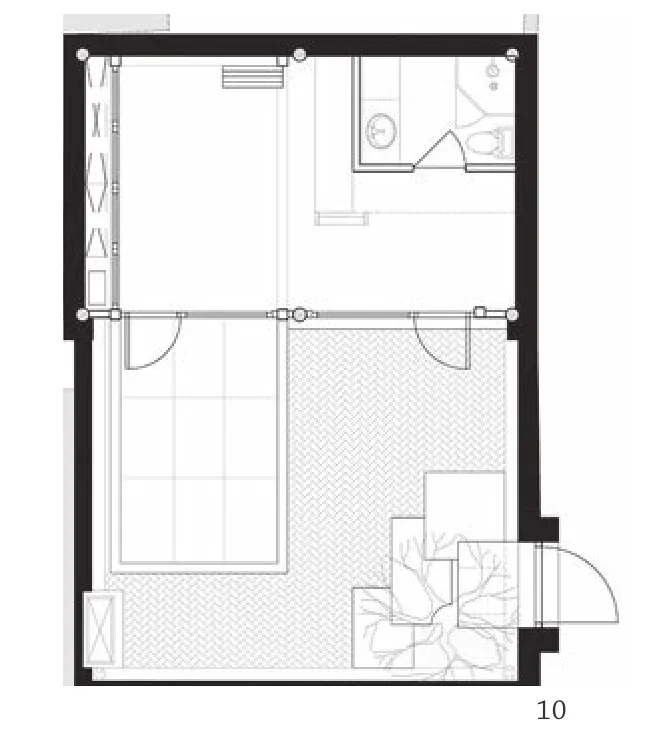
10 改造后首层平面/Ground floor plan after renovation
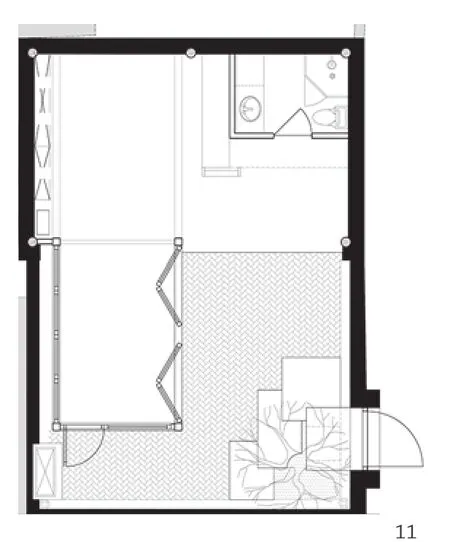
11 改造后首层平面,推拉模块展开/Ground floor plan with push and pull modules expanded, after renovation

12 夹层卧室平面/Loft plan after renovation
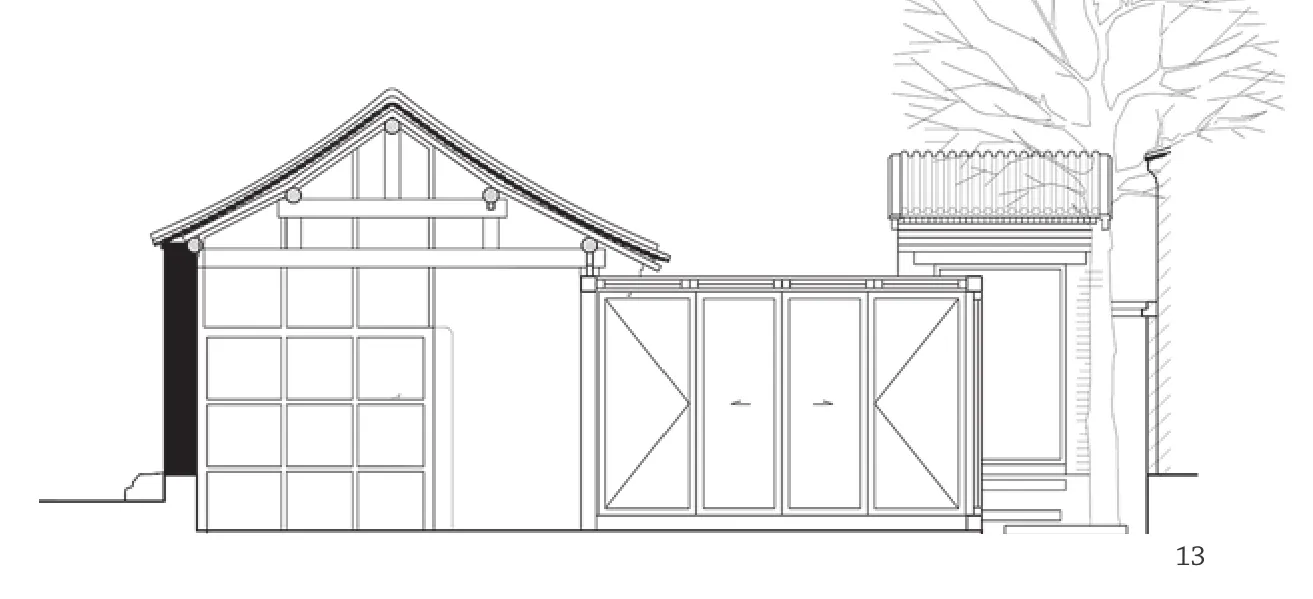
13 改造后剖面/Sections after renovation

14 改造后剖面/Sections after renovation

15 院落改造前内景/Interior views before renovation
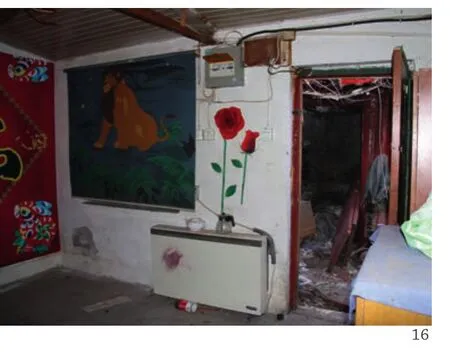
16 院落改造前内景/Interior views before renovation
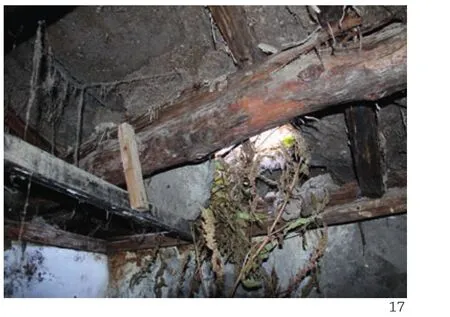
17 改造前开裂木作/Cracked wood work before renovation
Drawer Courtyard is located at No.39 Qingta Hutong in the Baitasi area in Beijing. It has a simple and square layout with one house and one courtyard.In the original condition before renovation, two illegal-built houses occupied most part of the courtyard and made the overall environment very cramped. It presents a common situation in Hutong,that residents spontaneously build additional houses in the courtyard as they need more living room. However, although the illegal constructions in the courtyard meet the residents' temporary living requirements, contradiction occurs between them and the relevant planning authority who responsible for urban pro file control. The preservation planning of Baitasi area requires that the property right area and overall pattern of the original buildings shall not be changed upon subsequent renovation, and that the volume ratio and the height of roof and eaves also shall remain unchanged.
The courtyard's smallness and the planning regulations' strictness initially brought many restrictions to this project, but lately became the main sources to inspire the design scheme. Lian is a mirror box used by ancient Han women to store toiletries. It is small but quite useful. On the premise of retaining the shape pattern and keeping the volume ratio unchanged, the scheme takes"Drawer Courtyard" as the concept of design. By inserting space like drawer that can be pushed and pulled in the building, the user could increase and decrease the interior space flexibly. It could also help to organise the relationship between "courtyard"and"house", even in a narrow space like the given courtyard, this project could achieve the goal of diversified uses.The renovated courtyard house is divided into two bays. The west bay is integrated with the push-and-pull module to form the overall workspace in an adjustable size, while the east one accommodates a life module which combines the functions of bathroom, bedroom and cabinet to ensure comfort and privacy of modern life.
There are many such courtyards in the historic urban districts of Beijing. Those courtyards are not regular and important examples of the typical quadrangle, but they work as spatial carriers of the Beijingers' traditional living. They could be regarded as the essential cells to form the texture of the old city. We expect that the exploration of Drawer Courtyard can provide some new possibilities in the renewal of the old Beijing urban area in the future. The push-and-pull module and living module can be simply and organically arranged into the courtyard house. Residents can participate in the bottom-up protection and renovation according to their own needs, and eventually contribute to the revival of whole Hutong area via the renewal of the single unit - the courtyard.For the sake of promotion, the project did not employ expensive materials and sophisticated construction procedures. In the future, assembly of prefabricated components can also be considered as a more efficient and convenient way to scale the module production. Drawer Courtyard is a new research and exploration based on space protection and function use flexibility of courtyard buildings.It is expected to provide a replicable, sustainable and practical solution for other old urban areas in China, as they are facing the similar problems in renewal.

18 立面/Façade

19 周边环境/Surrounding
评论
范路:在奩院改造项目中,可电动伸缩的“屉式”空间是设计亮点。它让传统小院维持容积率,保留形态格局,并可以自由地增减室内使用面积。这种机械化的“灰空间”也是“宅”与“院”相互“博弈”的焦点。其背后的主导力量是生活模式和空间效率,也是庭院风景和四季气候的变化。当然,易增难减的室内家具和生活中常有的惰性,则是可变建筑元素的“敌人”。
Comments
FAN Lu: In the renovation project of Drawer Courtyard,the design features a flexible volume in the courtyard. The newly built electric-driven volume is made up of steel and glass and could extend into the courtyard and retract back into the original house. It is the con flict focus of interior and exterior spaces and the good and bad weathers. While at times, the added furniture and inert lifestyle could bring some trouble to this restless "drawer type" volume.
思唯雅·兰泰里:在胡同更新的过程中,建筑师有两种截然相反的立场:一些建筑师试图通过使其致密化来改造该区域,而另一些建筑师则通过减少体量来恢复过去的图底关系之间的平衡。本项目正属于后者。它从拆除占据了原有大半院落的两间违建房屋开始,置入一个必要且适应性强的生活模块,该模块由基本要素构成,还可以由住户根据需求调整。如此形成了一个非常内向的空间,从外部看,它既与环境保持着连续性又并未与之有任何特定的互动关系。(庞凌波 译)
Silvia Lanteri: Inside the hutongs regeneration processes, architects take two opposite positions: some of them try to transform the area by densifying it,some reduce the volume to restore the ancient balance between built and voids. This project is part of this second category: it starts from taking out two informal houses occupying most part of the original courtyard,and put an essential and adaptable basic cell, made of elements that can be modified by the residents.A very introverted space, from the outside it is in continuity with the context but without any particular interactions with it.
